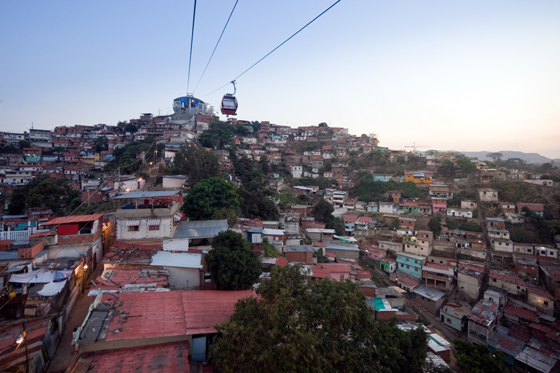Quiet Musings: Andres Lepik
Text von David Sokol
Washington, DC, USA
30.11.10
A series of new architecture commissions and exhibitions suggests that museums might no longer be in the business of pageantry. In this first part of a short series examining post-spectacle museums, Museum of Modern Art contemporary architecture curator Andres Lepik discusses his new show 'Small Scale, Big Change', and how its earnest perspective aligns with his department’s vision.
Think again about the architecture curator's cushy perch. If figuring out how to represent the built environment faithfully from miles or generations away weren’t sufficiently puzzling, then imagine that task in light of the internet. Images zip across screens, and press statements and comments wars stand in for dialogue; meanwhile, back at the museum, careful selection, critical interpretation, and thoughtful exhibition take time. Abstract representation and analogue pacing would seem to threaten curators’ ability to relate to audiences.
The Museum of Modern Art houses several members of this rare breed. By transforming themselves from collectors into concept generators, they’re surmounting the deterrents.
Anna Heringer and Eike Roswag. METI – Handmade School. Rudrapur, Bangladesh. 2004-06. Image: Kurt Hörbst
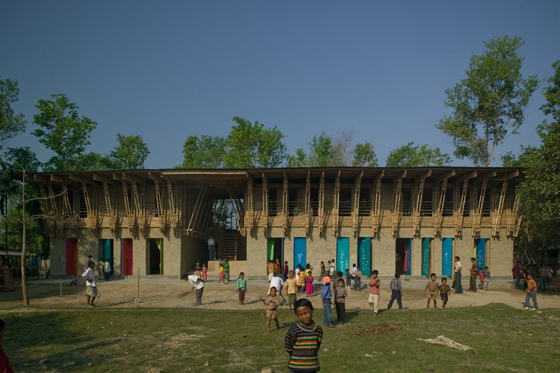
Anna Heringer and Eike Roswag. METI – Handmade School. Rudrapur, Bangladesh. 2004-06. Image: Kurt Hörbst
×It began in 2000 with the launch of the MoMA/MoMA PS1 Young Architects Program. In this invited competition, young architects submit installation designs for the triangular courtyard of MoMA PS1, the 39-year-old contemporary art center located in a former school building in Long Island City, Queens; the winning design is installed for the summer, serving as a venue for performances, parties, and lazy hangouts. 'Giving younger offices the chance to develop their ideas in a competition situation is a new position for the museum.'
Speaking is Andres Lepik, who in 2007 joined MoMA as curator of contemporary architecture under Architecture and Design Department head Barry Bergdoll. Previously Lepik was a curator at the National Gallery in Berlin, where he organised shows on Rem Koolhaas and other big names, and then Berlin’s Kunstbibliothek, where he focused on globally known local firms. By the time of his MoMA appointment, he had veered far enough from the celebrity system that he told one reporter he would use his new job '[n]ot as a way to promote certain architects to make stars of them, but rather to establish what is worth investigating about architecture today, and to figure out what is representative of a certain style'.
Hashim Sarkis A.L.U.D. Housing for the Fishermen of Tyre. Tyre, Lebanon. 1998-2008. Image: Joumana Jamhouri
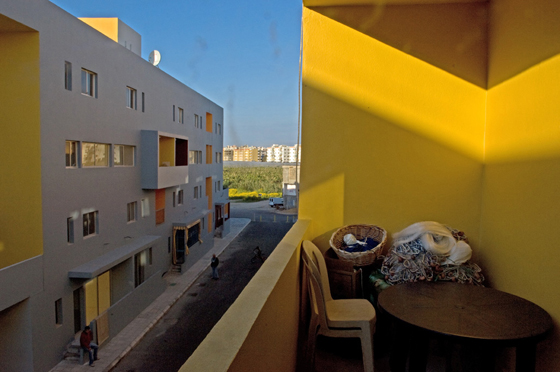
Hashim Sarkis A.L.U.D. Housing for the Fishermen of Tyre. Tyre, Lebanon. 1998-2008. Image: Joumana Jamhouri
×In that vein, Lepik’s latest project is the exhibition 'Small Scale, Big Change: New Architectures of Social Engagement'. It features 11 built works that benefit underserved communities, largely located in the developing world but also in inner-city Los Angeles and rural Alabama. To be sure, the exhibition includes some recognisable talents doing this work, such as Teddy Cruz and Hashim Sarkis, but the show’s subject insistently is neither celebrities nor their trophies. Here Lepik talks with Architonic about the exhibition’s gestation, his professional evolution, and how both propel MoMA’s adaptation to the challenges of contemporary curatorship.
Michael Maltzan Architecture. Inner-City Arts. Los Angeles, California. 1993-2008. Image: Iwan Baan
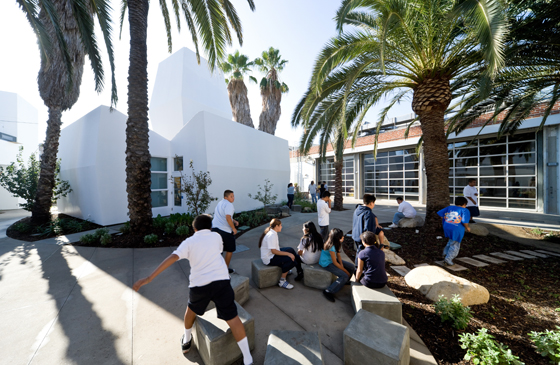
Michael Maltzan Architecture. Inner-City Arts. Los Angeles, California. 1993-2008. Image: Iwan Baan
×.....
To call you anti-celebrity would be an overstatement.
Star architects still are very innovative, they are great minds that produce great architecture, but I’m not fixated on what the stars are doing, saying, building. Let’s focus on someone who hasn’t gotten this attention yet and who may be worth it; maybe they’re doing architecture other than museums, high-rises, and expensive single-family housing. Let’s see what else is there.
Where did this opinion originate?
It’s a little bit born from working with architects as a curator. Architects try to influence everything, so in terms of retaining control, it’s better to work with architects who have less power. Also, in the last few years I’ve gotten tired about who’s getting the next Pritzker. Is that really what the museum should care about, or is it better to make the museum a forum for other ideas that are not yet discussed widely?
Noero Wolff Architects. Red Location Museum of Struggle. Port Elizabeth, South Africa. 1998-2005. Image: Iwan Baan
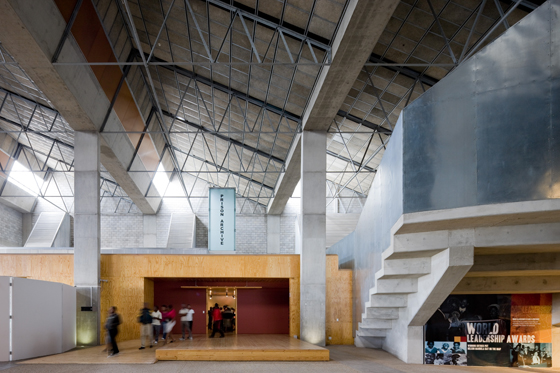
Noero Wolff Architects. Red Location Museum of Struggle. Port Elizabeth, South Africa. 1998-2005. Image: Iwan Baan
×What gave birth to 'Small Scale, Big Change' specifically?
Urban Think Tank had exhibited its design for Metro Cable, before the Caracas government had taken up the proposal. I thought this urban transport system was interesting, and completely out of reach. But Urban Think Tank achieved such publicity for this project that even Hugo Chávez found it important for making inroads into poor neighborhoods. I thought, Wow, these architects are not just waiting for commissions to come in. They’re taking a risk. Metro Cable didn’t turn out as exactly as they wanted, but it happened and I think that’s a success.
Diébédo Francis Kéré. Primary School. Gando, Burkina Faso. 1999-2001. Image: Siméon Duchoud/Aga Khan Trust for Culture
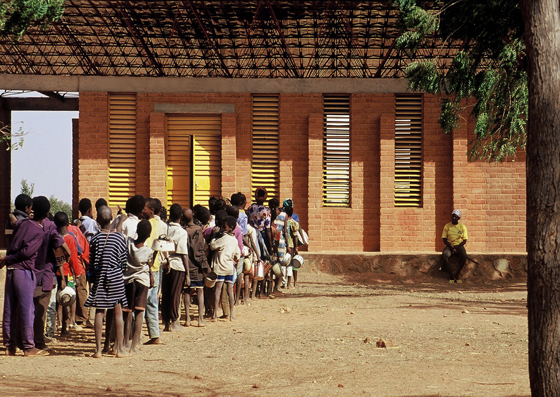
Diébédo Francis Kéré. Primary School. Gando, Burkina Faso. 1999-2001. Image: Siméon Duchoud/Aga Khan Trust for Culture
×Barry Bergdoll recently took a similar risk.
With 'Rising Currents' he began doing city-planning workshops with younger architects: Guy Nordenson and his students had prepared in-depth research about rising sea levels, which is totally fascinating, but it didn’t have architectural ideas in it. It was just an engineering study of potential impact. Although the problem is great, the public won’t read physical data. Visualizing the data can raise awareness; showing responses to the danger can raise awareness.
Having younger architects develop those case studies is good, because they’re naive in the right way. They don’t have exposure to all the administrative problems of working with city commissions or planning departments. The planners were critical, but Barry and I thought that that without any rules, we could start a very open process. And having them work on proposals in residence at PS1 allowed people to see the workshops and talk with the architects – and the architects really enjoyed talking to each other. Involving the public in discussion had a high impact on attendance and opinion. It was a big success, and this is how we want to continue in the future, maybe with universities as well as architects.
The 'Rising Currents' workshop also responded to the recession. Many of these young offices were in danger of laying off people, and Barry’s idea was to develop the workshop from the Rockefeller Foundation grants so that these offices could keep some of these architects.
Urban-Think Tank. Metro Cable. Caracas, Venezuela. 2007-10. Image: Iwan Baan
Do you and Barry have a queue of other social issues you want to take on?
There’s nothing specific to report at the moment. But we don’t want to promote ideas that come from the outside; we want to develop ideas from the inside. And although we’re not a museum of New York history or architecture, we want to use New York as a model for big cities in general. As we know, mega-cities are growing faster than anything else, and we think the city is a laboratory for architectural ideas. The city is the model for how society will grow.
You’ve guessed that 90 percent of museum-goers don’t engage with architecture content. How do you reconcile these serious, possibly esoteric shows with the desire to grab people’s attention?
People come to MoMA because they want to see what is really of the moment. They want to be surprised. Everybody reads about the problems of favelas, or about the mass migration from rural areas to mega-cities like Lagos. So on the one hand we show how Diébédo Francis Kéré and Anna Heringer improve those rural areas, to help people stay in those areas, and on the other hand the exhibition includes projects like Metro Cable, which show the efforts to improve the favelas. I think showing real projects gives viewers confidence that this is not talking or theory, but that it’s happening, that architects are really doing something.
Rural Studio, Auburn University. $20K House VIII (Dave’s House). Newbern, Alabama. 2009. Image: Rural Studio, Auburn University
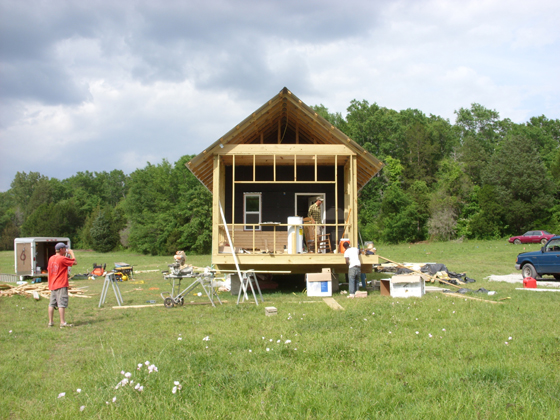
Rural Studio, Auburn University. $20K House VIII (Dave’s House). Newbern, Alabama. 2009. Image: Rural Studio, Auburn University
×Since socially engaged architecture eschews spectacle almost by definition, should it even appear in big-name exhibition spaces like MoMA?Since socially engaged architecture eschews spectacle almost by definition, should it even appear in big-name exhibition spaces like MoMA?
The role of the museum is changing, from event space to a destination for education and spectacle at the same time. To present an exhibition on such a theme means to call visitors’ attention to an aspect of architecture that the majority would not expect to find in a museum. It is important to transfer academic discussions about the social relevance of architecture to the museum audience, to reinforce that idea. An institution as big and powerful as MoMA is the ideal platform to move the public perception of architecture in another direction.
Inclusion at MoMA also validates that idea.
Success can be found on various levels. For example, the elementary school of Francis Kere received the Aga Khan Award. With this recognition, the architect was able to build extensions to the school. Also, the school has the best grades in the region, and now the government asked the architect to build a high school. Many workers trained on the original construction site are now working for other clients.
In many cases the impact runs in two directions. The project has an impact on the community and, with success, the architect is able to work on more and other projects, sometimes in the same community. What I want to express is there is not only a one-dimensional effect (building a school equals education for the children) but multi-faceted effects.
Installation photo at MoMA. Urban-Think Tank. Metro Cable. Caracas, Venezuela. 2007-10. Image: Jason Mandella
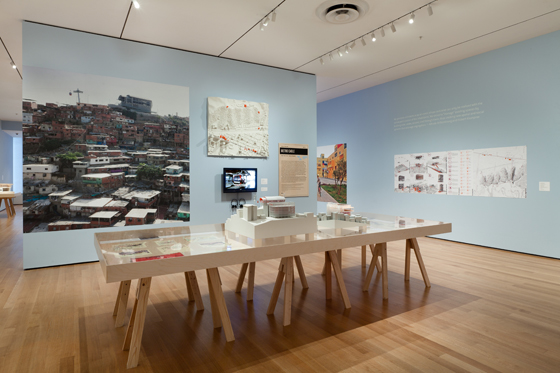
Installation photo at MoMA. Urban-Think Tank. Metro Cable. Caracas, Venezuela. 2007-10. Image: Jason Mandella
×And there’s more to come – more of this movement, and more exhibition projects to address it.
Like 'Design For the Other 90%', this is not the first exhibition to address social issues. It is helping turn the idea into a whole new direction, and I think there will be more exhibits like it to come. Maybe more focused on specific problems, like the real strategy for building in developing countries, or urbanization, or slum upgrades.
Also, for me, documenting an architecture that is engaged in social questions goes back to early Modernism, which was based on the idea of bringing good design to all layers of society. Such as social housing. I want to continue this retrospective research, too. Ralph Erskine and Aldo van Eyck introduced ideas that may be interesting to a younger generation now. Some of these guys are a timely discussion. There’s more.





